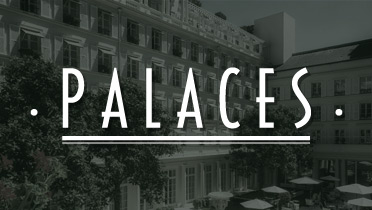China, Jian Tang Town
Banyan Tree Ringha
The Banyan Tree Resort hotel, above the Tibetan valley of Ringha, faces the distant snow capped Himalaya Mountains. The Banyan Tree group took these old Tibetan farms and created an upscale complex of chalets with colors and noble materials that plunge visitors into a delicately antiquated universe. Totally renovated, the 32 suites have recovered their past brilliance and have become minimalist retreats. The former stables, now gleaming bathrooms, cast a modern veil over these ancestral dwellings. The Banyan Tree Ringha is the ideal refuge for tasting the joys of contemplation. The journey continues at the Banyan Tree Spa where Indonesian boreh wrappings create magnificent moments of plenitude.
The Yunnan province
The southwestern Chinese province of Yunnan continues to delight and surprise visitors. This highly regarded tourist region possesses a wide variety of landscapes whose beauty inspired British writer James Hilton to create the myth of Shangri-La, the hidden valley in the heart of the Himalayas, inspired in turn by the Buddhist myth of the city of Shambhala. Shangri-La is a mythical and highly spiritual Garden of Eden transferred to the screen in 1939 by director, Frank Capra. The success of the novel and the film encouraged the Chinese authorities to officially give the name of Shangri-La to the Tibetan plateau region attached to Yunnan when the Republic of China annexed Tibet. “Yunnan is one of China’s most extraordinary regions. Twenty five of the country’s twenty six ethnic minorities live here, which is what makes the region so captivating,” according to French writer and diplomat, Sébastien Ortiz.
A gentle getaway
On the heights of the Tibetan Ringha Valley silence reigns except for the flapping of prayer rugs placed around the temple by pilgrims passing through. Furtive Tibetan chants can be heard coming from the 32 buildings of the Banyan Tree Ringha, 32 authentic traditional Tibetan farms purchased by the hotel chain and transformed into totally renovated, luxurious chalets. The suites retain their original structure and decoration including colorful friezes, carved beams and other local Tibetan cultural elements. The former stables on the ground floor have been converted into sumptuous bathrooms decorated with carved, painted wood.
The Banyan Tree group is well-known for the outstanding quality of its spas. The Banyan Tree spa takes its inspiration from traditional Himalayan customs and the Chinese five elements philosophy. Chinese therapeutic practices are based on the principle of the regulation of the body’s inner and outer energies. Little known in western countries, the Tui Na, or “pushing and seizing” massage, is carried out at the spa on the different parts and functions of the body, thus eliminating blockages and stimulating the self-healing capacity of the organism. Another treatment and a veritable regenerating cure is the Indonesian boreh, a mask with essences of cinnamon, sandalwood, ginger and rice which gives one the sensation of total release; a perfect way to end this moment of physical and spiritual well-being.
“The hotel was built there after one of the Banyan Tree group’s founders, looking for a peaceful retreat for he and his family, fell in love with the site. And there, at an altitude of 3,200 meters, between earth and sky, deeply rooted in Tibetan culture, he decided that he wanted to share these landscapes and especially the intense serenity that emanated from it. Three years later, in 2005, the Banyan Tree Ringha was born.” (Marie-Ange Ostré, publisher specialist in tourist photographer.)
details about this hotel
Description:
Five stars / Member Banyan Tree Hotels & Resorts / Shangri-La Valley / Breathtaking views over the valley and river / Art gallery / Tibetan culture / Restaurant with Tibetan & Western cuisine / Lobby Lounge / Prize winning Banyan Tree Spa / Library / Telescopes / Numerous tours / Trekking
When open:
Open all year
Number of rooms and suites:
32 suites and lodges, each with private terrace
Prices:
Double occupancy from 166 euros
Nearest airport:
Kunming Wujiaba International Airport (KMG) - Kunming
Hotel details:
BANYAN TREE RINGHA
Hong Po Village, Jian Tang Town
Shangri-La County
Diqing Tibetan Autonomous Prefecture
Yunnan Province, China
674400
details about this country
Flight time from Paris:
Approximately 10 hours
Time difference from Paris
:
+ 6 hours in summer / + 7 hours in winter
Climate:
Almost all existing world climates (except for extreme Siberian cold), from torrid to glacial
Necessary travel documents for French nationals:
Passport valid at least six months after end of visa date
Visa required for French citizens
No vaccinations required except yellow fever for visitors coming from infected regions
Currency:
The renminbi, the Chinese yuan (CNY)
Languages spoken:
Mandarin, Cantonese
Book by phone
+33 1 75 43 70 26 *Our reservation department is always happy to assist you via phone or via email. We are open Monday to Friday 9am to 18pm (GMT +1).
- Best rates guaranteed
- Upgrade upon availability
- No booking fees
- Instant confirmation























